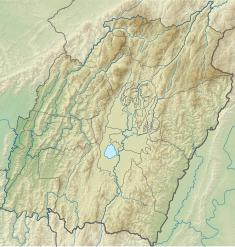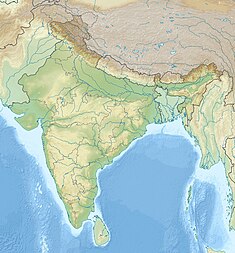This article relies largely or entirely on a single source. (January 2019) |
The Ithai Barrage impounds the Manipur River just below the confluence of the Imphal River and the Khuga River. It is part of the Loktak Hydroelectric project.[1]
| Ithai Dam | |
|---|---|
| Official name | Ithai Barrage |
| Coordinates | 24°25′30″N 93°50′11″E / 24.4250575°N 93.8364636°E |
| Construction began | 1971 |
| Opening date | 1983 |
| Construction cost | Rs 1,150,000,000 |
| Pumps | 3 |
| Installed capacity | 105 MW |
Its primary objective is to regulate water levels in the Loktak Lake, effectively converting it into a reservoir. Initiated by the Ministry of Irrigation and Power in 1971, the project was overseen by the National Hydro-Electric Power Corporation and completed in 1983, with an estimated expenditure of ₹115 crore (US$13 million).[2]
Functionally, the barrage comprises three units, each capable of generating 35 MW, totaling 105 MW of power generation capacity. Additionally, it provides irrigation services to approximately 24,000 hectares of land, enhancing agricultural activities in the region. Notably, the Imphal River serves as the primary outlet for draining water from Manipur's central valley. Given that all watercourses in the valley are intricately linked, with the Loktak Lake acting as a nexus, the Ithai barrage assumes a pivotal role in regulating the region's water dynamics.
References
edit- ^ "LOKTAK HE Project". India-WRIS. Retrieved 30 December 2018.[permanent dead link]
- ^ H Tombi, Singh (7 October 2018). "IMPACT OF THE ITHAI BARRAGE ON THE ENVIRONMENT OF MANIPUR: AN OVERVIEW". News from Manipur - Imphal Times. Retrieved 14 May 2024.

